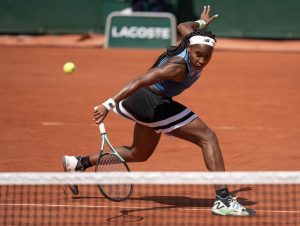Best-of-five set tennis has come under a determined assault in recent times. Ignoring the apparent lack of evidence to support their case, a number of former-players and journalists have argued that such long matches are out of step with the interests of the viewing public. Ben Rothenberg, one notably determined critic of the format, recently joined Simon Cambers and Noah Rubin on the Tennis Majors talk show to ‘debate’ whether it had a future in the game.
All agreed that for tennis to move forward, shorter formats were needed. All were wrong. Much like test cricket, best-of-five sets tennis is now played much less often than in the past, but is perhaps more special because of it. And much like test cricket, it remains unquestionably the ultimate challenge for the players. A challenge that should have long ago been extended to women at the Majors, if nothing else because it would demolish the ridiculous notion that they are not worthy of equal pay because they play less tennis.
What is strangest about the criticism of best-of-five sets tennis is that fans do not enjoy it because it requires so much time to watch a match from start to finish. Why quite these critics cannot grasp that a match need not be watched in its entirety to be enjoyed escapes this writer, but that is perhaps besides the point. Because what they also overlook in their rush to throwaway five-set tennis is the variety of results produced by the format.
From the three-set demolitions to the five-set battles, Grand Slam tennis provides fans with the chance to enjoy a diversity of outcomes that sets the Majors apart from regular tour events. That includes the all too often overlooked four-setter. Fortunately, Novak Djokovic and Pablo Carreno Busta served up a timely reminder of the joys of a four-set clash in their French Open quarterfinal, which the Serbian won 4-6 6-2 6-3 6-4.
It was a match in which he had initially struggled. He emerged with taping on his neck and had the trainer out to treat his left arm more than once. He was uncertain in his movement and his groundstrokes lacked their usual potency and penetration. Carreno Busta, a man in fine form, was not slow to take advantage. Pulling Djokovic from pillar to post in a number of extended baseline exchanges, the Spaniard deservedly took the first set 6-4 after a flurry of late breaks.
Djokovic, however, has not won 17 Grand Slam titles for nothing. Shaking off whatever had been ailing him, he roared back into contention. Playing with renewed conviction, he at last began to find a way through Carreno Busta’s defences, with Djokovic effectively targeting his opponent’s weaker forehand wing. Eight games later, he had levelled the match and when he broke in Carreno Busta’s first service game of the third set, he appeared to be in complete control.
But if Carreno Busta had lost his way, it did not take him long to find it again. His forehand, as Djokovic demonstrated, is not as reliable as his two-hander, particularly in defence, but he can do damage with it when given the chance to open his shoulders. After getting on the board in the fourth game of the set, Carreno Busta broke Djokovic to get back on serve. Unfortunately, that only served to force Djokovic to raise his level further still.
The world #1 won the next three games to seal the set, but blessedly, not the match. Because after what had been a rather dour opening set, characterised chiefly by Djokovic’s physical struggles rather than especially enjoyable tennis, the quality on show had begun to improve point by point. By the time the contest reached its fourth set, it had become a high-class slugging match between two of the best baseliners in the men’s game.
Of course, Carreno Busta’s chance had realistically been and gone, with Djokovic unquestionably in the ascendancy. But the Spaniard was in no mood to go quietly into the night. Instead, he forced his opponent to fight tooth and nail for his victory, doggedly resisting Djokovic’s attempts to bring the match to a swift conclusion. Fives times Djokovic forced a break point and five times Carreno Busta denied him, until at last his resistance faltered in the seventh game of the set when Djokovic broke through decisively.
The Serbian went on to serve out the match, sealing his victory with a cross-court forehand winner that wrongfooted his opponent. Had the match ended after three sets, the fans, both in the grounds in Paris and those watching at home, would have missed out on 55 minutes of enthralling tennis, with the fourth and final set surely the best of the match. Djokovic too would have gotten off relatively lightly, instead of being forced to make one last push for victory against a determined opponent.
It was not, of course, one of the finest Grand Slam matches of all time. In fact, whether Djokovic goes on to lose in the semifinals or to win the title, it will likely not be remembered for long. But it was an entertaining contest, a physical and mental battle, and one that would have felt incomplete had it been shorn of its final chapter.
Five-set tennis may well not survive if it has only the absolute classics with which to make its case. Such matches are relatively few and far between, with the majority of matches settled without needing to go the distance. Fortunately, however, the humble and dependable four-setter provides another compelling argument in its favour.
Main photo:
Embed from Getty Images






